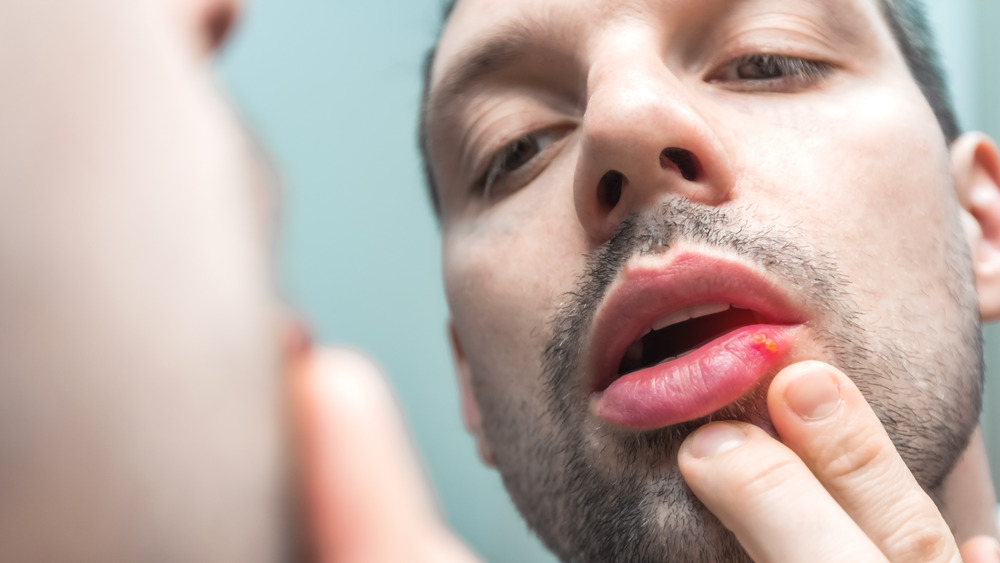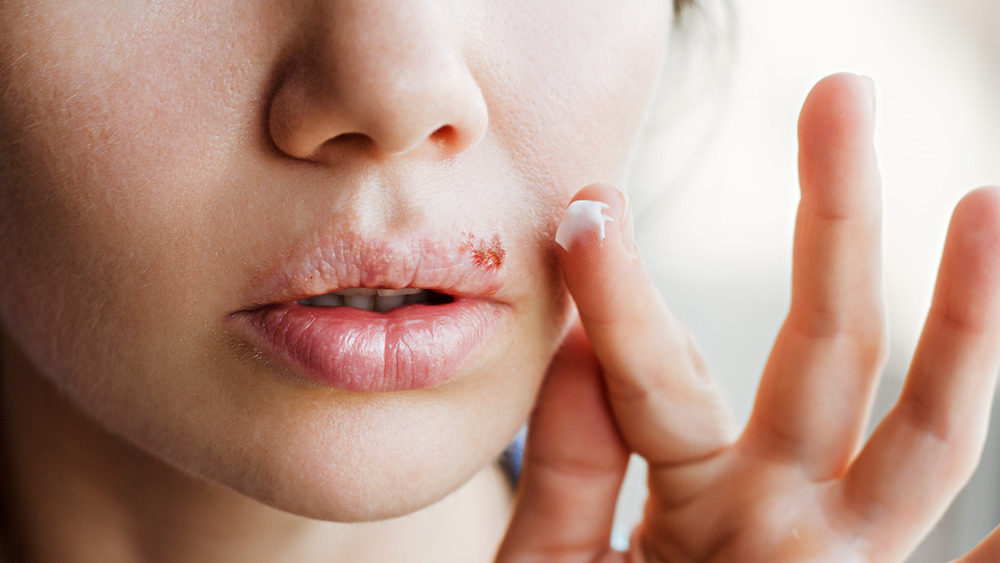Why You Should Think Twice Before Putting Toothpaste On A Cold Sore
Cold sores, also called fever blisters and oral herpes, are small, pus-filled blisters that are found around the lips (via Mayo Clinic). They're typically caused by the herpes simplex type 1 virus (HSV-1) and sometimes may be caused by the herpes simplex type 2 (HSV-2), though this is much less common. Oral herpes spread through close contact, such as kissing. It is also possible to pass both types of the herpes virus through oral sex.
While they may be unsightly, cold sores are very common. According to the National Institutes of Health, HSV-1 infects more than half of the U.S. population by the time they're in their 20s. Overall, it's estimated that 50 to 80 percent of American adults have oral herpes (via Johns Hopkins Medicine).
A number of remedies exist to treat cold sores with varying levels of success. You've likely heard the recommendation to put toothpaste on a fever blister to treat it. Many brands of toothpaste contain sodium lauryl sulfate (SLS), which can help dry out blisters and cold sores (via Healthline). However, there is no scientific evidence to prove putting toothpaste on a cold sore actually works. Rather, claims that toothpaste works as a prevention or cure are purely anecdotal — meaning the advice is based on personal experience rather than any clinical research.
How to treat a cold sore
Cold sores typically go away on their own within two to four weeks (via Mayo Clinic). But if you'd like to speed up the healing process, several prescription antiviral medications are available, including Acyclovir (Zovirax), Valacyclovir (Valtrex), Famciclovir, and Penciclovir (Denavir). Some of these treatments are pills to be taken orally, while others are creams to be applied topically several times a day. In very severe cases, antiviral drugs may be given by injection.
Over-the-counter ointments like docosanol (Abreva) may also help move along the healing of cold sores. Follow the directions on the package for application and use a cotton-tipped swab (rather than your finger) to put medicine on the fever blister. This will help prevent the spread of the infection to other parts of your body. Other home remedies include applying cold compresses to the affected area, using lip balms and cream with SPF to keep the lips moist and protect them from the sun, and taking over-the-counter pain relievers if you have a fever or the blister is painful. According to the Mayo Clinic, while research studies have been mixed, there may be some benefit to alternative medicines, including lysine (an amino acid available as an oral supplement or cream), rhubarb and sage, and propolis, also known as synthetic beeswax.


